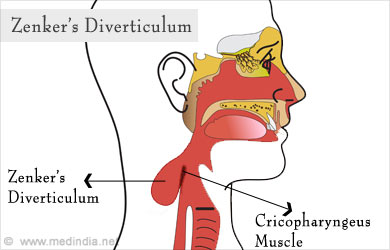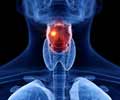- Globus pharyngis - (http://en.wikipedia.org/wiki/globus_pharyngis)
What is Difficulty in Swallowing or Lump in Throat Symptom?
The sensation of difficulty in swallowing (medically called dysphagia) in the absence of any apparent physical abnormality is often commonly described as having “lump in the throat”. The most common cause of such a sensation is due to tightening of the crico-pharyngeal muscle surrounding the esophagus, it is called Globus Pharyngeus or Globus Hystericus. The majority of patients complaining of the sensation of a lump in the throat suffer from this condition.
In other cases, lumps in the throat are due to a physical abnormality like swollen lymph nodes (“glands”), tumors or thyroid disorders. These lumps are a sign of an underlying condition that may require treatment.
Hence the ‘Types of Lumps’ in throat are divided into two broad categories –
- Globus Hystericus: the sensation of swelling or obstruction in the throat as described above.
- Physical abnormalities or anomalies in the throat: In this type, there is an identifiable cause for the sensation of lump in the throat.

Most commonly it is infection, causing swelling of lymph nodes in the throat. Other causes for lump like sensation in the throat are crico-pharyngeal muscle disorders, esophageal conditions, neuropathies, thyroid disorders and tumors in the throat.
What are Causes of Difficulty in Swallowing or Lump in Throat Symptom?
Why does ‘Globus Hystericus’ or ‘Globus Pharyngeus’ occur – this sensation occurs due to a reflux from the stomach to the upper pipe called esophagus (Gastroesophageal reflux). The crico-pharyngeal muscle tightens in order to prevent reflux of stomach contents into the esophagus, causing a lump like sensation in the throat. The crico-pharyngeal muscle acts like a valve and keeps this portion of the throat always closed and opens only for a short time when you swallow food. If the muscle fails to relax it causes swallowing difficulty and if it goes into spasm it gives the sensation of a lump in the throat but this does not interfere with swallowing.
Common conditions causing it are:
- Stress- can be precipitated by a stressful situation.
- Anxiety – It is a state of unpleasant feeling from with in, due to fear and worry of a future threat.
- Depression – It is a state in which a person feels low or uninterested in activity affecting his thoughts, behavior and state of well-being.
- Schizophrenia – It is a condition in which the brain is affected, altering the way a person acts, thinks and perceives things in his life.
- Hysteria – It is a fear due to overwhelmed emotions concentrating on a body part.

Lump-like sensations in the throat occurring due to physical abnormalities can also be due to:
- Infections of the upper respiratory tract (laryngitis, pharyngitis, tonsillitis) – Infection can be bacterial, viral or fungal. Besides sensation of lump like sensation in the throat other common symptoms include - raspy voice, cough, difficulty swallowing and tenderness when swallowing.
- Scars / hypertrophy / spasticity in the cricopharyngeal muscle
- Stricture / narrowing of the esophagus – It is the narrowing of the lumen of the esophagus as a result of radiation therapy, dysfunctional lower esophageal sphincter, problems with motility, gastroesophageal reflux disease (GERD) and hiatal hernia.
- Laryngopharyngeal reflux – It is similar to GERD, except for reflux of stomach contents into larynx or pharynx. It causes cough, hoarseness and asthma.
- Eosinophilic esophagitis – Inflammation of the esophagus with accumulation of eosinophils.
- Zenker’s diverticulum - It is a diverticulum (or “outpouching”) of the mucosa of the pharynx above the cricopharyngeal muscle, which makes up the upper sphincter of the esophagus. It is also medically called as pharyng-oesophageal diverticulum or pharyngeal pouch or hypopharyngeal diverticulum.

- Cysts – A collection of cells in a tissue which are separate from the rest of the tissue.
- Granuloma - It is a collection of immune cells. This happens because the immune system is unable to eliminate substances, which it perceives as foreign like viruses, fungi, and bacteria.
- Cancer – Cancer affecting any organ in the throat can be collectively termed as throat cancer. Cancer is the abnormal cell growth, which has a tendency to invade and spread to other parts of the body. Pharynx, larynx, thyroid and esophagus can be affected. Common symptoms include difficulty swallowing, unintentional weight loss, difficulty breathing, change of voice and fatigue.
- Thyroid disorders (Goiter) – It is the swelling of the thyroid gland due to its inefficient functioning. It can be associated with hyperthyroidism (over functioning) or hypo-thyroidism (under functioning). Symptoms vary depending upon its state of functioning.
- Spastic neuromuscular disease – It is a group of conditions caused either due to injury or illness with in the central nervous system. Common conditions under this group are Multiple sclerosis, dystonia, Huntington’s disease, Parkinson’s disease and muscular dystrophies.
- Canker sores in the throat – These are small round sores that commonly occur with a viral infection and are not contagious. They are found under the tongue, on the inner side of the cheek and at the back of the throat. They are aggravated due to stress, hormonal changes especially during periods, in vitamin deficiencies and allergies.

What are the Symptoms of Lump in the throat or Difficulty in Swallowing (Dysphagia)?
- Heart burn
- Difficulty swallowing/Pain while swallowing food
- Difficulty breathing
- Change in voice (raspy voice or muffled)
- Cough

- Gag sensation
- Feeling of suffocation
- Weight loss/gain (thyroid conditions, cancer)
How to Diagnose Lump in the throat or Difficulty in Swallowing (Dysphagia) Symptom?
Physical examination of the throat needs to be done initially. Depending upon the results further evaluation with throat swab (to diagnose infection), fiber-optic endoscopy (to look for tumors or ulcers), barium swallow and upper esophageal manometry (to evaluate GERD and hiatal hernia) can be ordered. Investigations like 24 hour pH probe and multichannel intraluminal impedance testing are suggested for further assessment of GERD. In case of abnormal barium swallow results, esophagoscopy is done to further investigate the cause.
What are the Complications of Difficulty in Swallowing or Lump in the throat?
- Rheumatic fever – It is an inflammatory condition that develops after two to four weeks of a bacterial throat infection that is not completely treated or untreated. It affects joints, heart, skin and brain.
- Inflammation as a result of radiation treatments.
- Speech problems – Can happen with throat surgeries. Voice therapy is useful in this situation.
- Scarring and deformity - Throat surgeries requiring removal of tissue can lead to scarring and deformity.
- Tracheostomy – A surgically created hole in the neck to the trachea, in case of laryngectomy or long term mechanical ventilation.

What are the Treatments for Lump in the Throat or Difficulty in Swallowing?
In case of bacterial infection, a course of antibiotics is given. If viral infection is suspected, symptomatic treatment along with warm salt water gargles are useful to ease the symptoms.
Proton pump inhibitors and histamine receptor 2 blockers are useful in treating acid reflux symptoms. Surgery, chemotherapy, radiation therapy are used to treat cancers depending upon the stage of the disease. Hormone replacement therapy is required after resection of thyroid gland.






